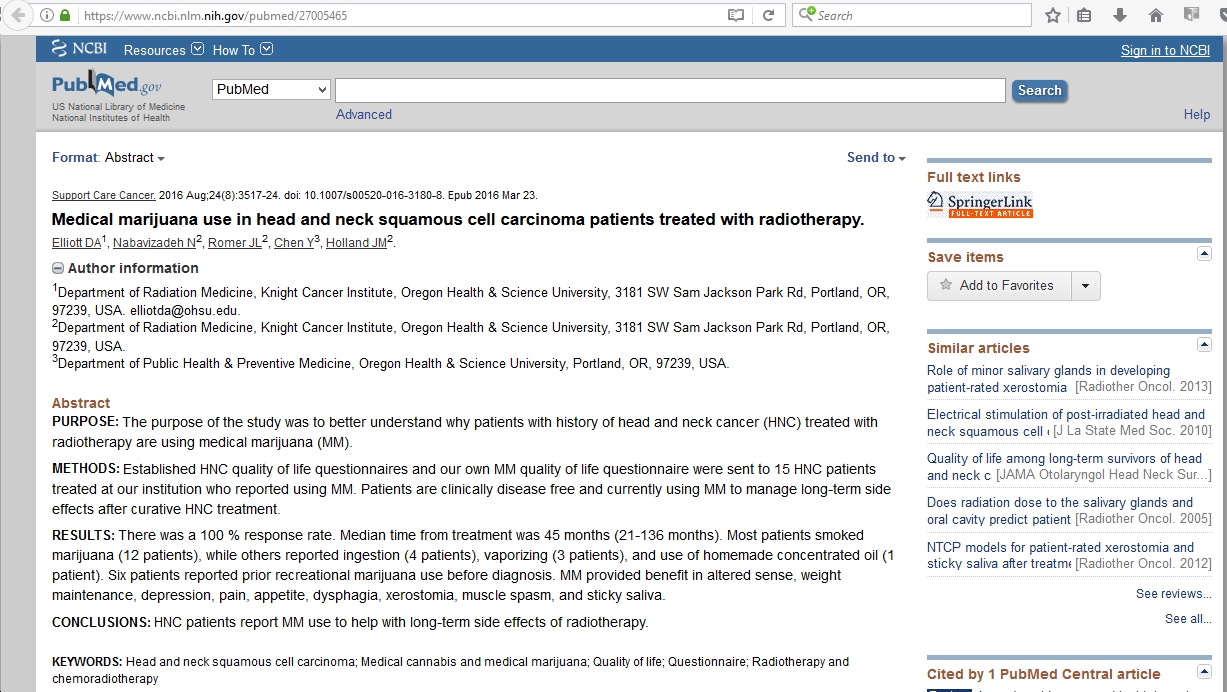Elliott DA1, Nabavizadeh N2, Romer JL2, Chen Y3, Holland JM2.
- 1Department of Radiation Medicine, Knight Cancer Institute, Oregon Health & Science University, 3181 SW Sam Jackson Park Rd, Portland, OR, 97239, USA. elliotda@ohsu.edu.
- 2Department of Radiation Medicine, Knight Cancer Institute, Oregon Health & Science University, 3181 SW Sam Jackson Park Rd, Portland, OR, 97239, USA.
- 3Department of Public Health & Preventive Medicine, Oregon Health & Science University, Portland, OR, 97239, USA.
Abstract
PURPOSE:
The purpose of the study was to better understand why patients with history of head and neck cancer (HNC) treated with radiotherapy are using medical marijuana (MM).
METHODS:
Established HNC quality of life questionnaires and our own MM quality of life questionnaire were sent to 15 HNC patients treated at our institution who reported using MM. Patients are clinically disease free and currently using MM to manage long-term side effects after curative HNC treatment.
RESULTS:
There was a 100 % response rate. Median time from treatment was 45 months (21-136 months). Most patients smoked marijuana (12 patients), while others reported ingestion (4 patients), vaporizing (3 patients), and use of homemade concentrated oil (1 patient). Six patients reported prior recreational marijuana use before diagnosis. MM provided benefit in altered sense, weight maintenance, depression, pain, appetite, dysphagia, xerostomia, muscle spasm, and sticky saliva.
CONCLUSIONS:
HNC patients report MM use to help with long-term side effects of radiotherapy.
KEYWORDS:
Head and neck squamous cell carcinoma; Medical cannabis and medical marijuana; Quality of life; Questionnaire; Radiotherapy and chemoradiotherapy.
